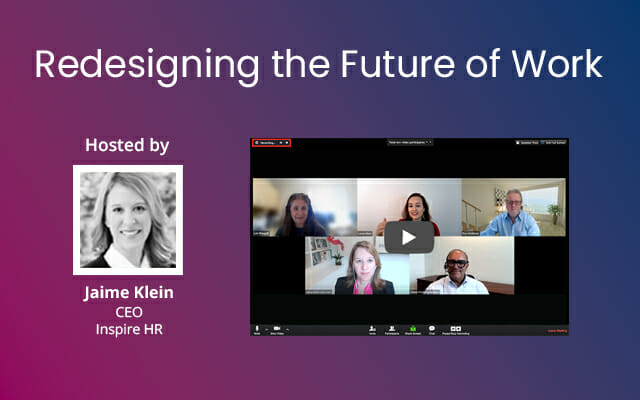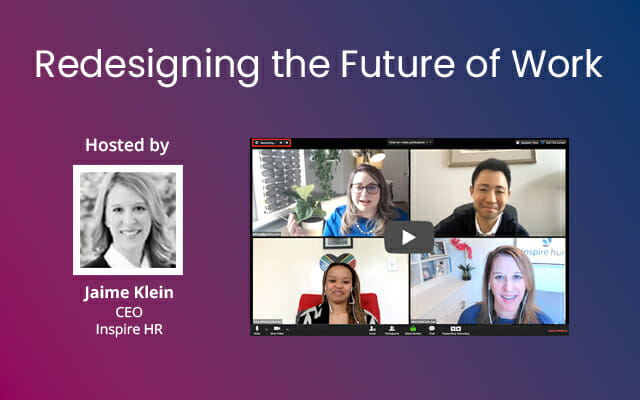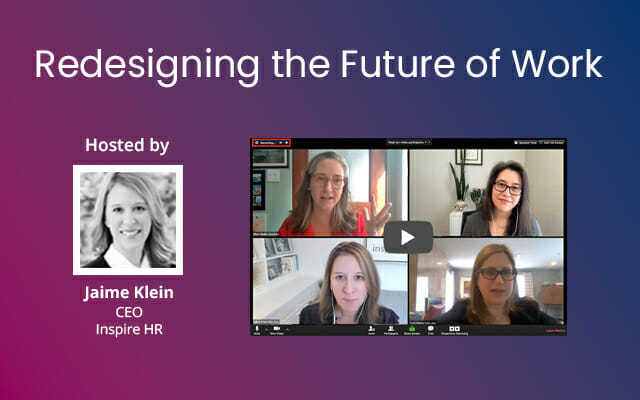
What Employers Need to Know About Pay Transparency in New York
Jaime Klein | JUL 26, 2022
Beginning in November 2022, employers hiring in New York City will be required to include a salary range in all job postings – a key component of pay transparency. The move was planned for May 2022, but the timeline was extended to give companies more time to comply.
Colorado already requires salary ranges in job postings and Washington will start in 2023. Many expect New York State to be next. Plus, several states have similar laws on the books, with variations around how proactive companies have to be in sharing salary information.
Before we get into what the requirement to post salary ranges means for employers, let’s take a look at why it’s important:
Pay transparency is an equity issue
Pay transparency is a major step forward toward equity at work. Currently, women make $0.83 for every dollar a man makes. The gap is even wider when you look through an intersectional lens. Black women earn $0.64, Indigenous women earn $0.50, and Latina women earn just $0.49 for every dollar a white man is paid. Transgender men and women also earn less than a typical employee: $0.70 for trans men and $0.60 for trans women.
The disparity extends beyond the paycheck, too. Less income leads to greater difficulty purchasing a home, saving for retirement, affording expensive healthcare and childcare costs, or weathering challenges like inflation or a recession.
Then there’s the “ask gap.”
In Women Don’t Ask, authors Linda Babcock and Sarah Laschever report on a study of 78 masters degree students, where they find that just 12.5% of women negotiated for their starting salary, compared to 52% of men. The result, Babcock and Laschever estimate, is as much as $1.5 million in lost income over the course of a woman’s career.
A study of doctors in residency shows the ideal salary for women is 8% lower than it is for men. And while there was no difference between women and men in their career goals, desire to hold positions of leadership, or expectations of hours they would work, feelings about salary negotiations show some stark differences. 18.6% of women versus 31.7% of men said they agree or strongly agree with the statement, “I believe that I have the tools to successfully negotiate an appropriate salary.” When asked about the statement, “The thought of negotiating for my salary is appealing to me,” 21.5% of women agreed or strongly agreed and 34.3% of men did.
Pay transparency levels the playing field by removing the unknowns and unease of salary negotiations. Disclosing the salary range from the start neutralizes the discussion and moves it from one that rewards negotiating skills to one that rewards talent and potential.
Bonus: being open about salaries can also be a retention-booster. According to a study by compensation software company Beqom, 60% of employees say they would switch companies to one with greater pay transparency.
Pay transparency in New York: what employers need to know
While we at Inspire are the first to applaud moves to promote equity and inclusion, the “Salary Transparency Provisions of the New York City Human Rights Law” and similar regulations nationwide have substantial implications for employers that have to be addressed.
We encourage all HR leaders to consult directly with their attorneys about how the law affects them.
The National Law Review published a useful summary of the details of the provision, including:
- Employers with four or more employees or one or more domestic workers (at least one of whom must work in New York City) are required to disclose minimum and maximum salary ranges in job postings.
- The salary range must also be included anytime there is a posting for an internal promotion or transfer opportunity.
- Salary disclosure requirements apply to both hourly and salaried employees, though other forms of compensation, such as bonuses, tips, and paid time off do not have to be included.
- The minimum and maximum salary range is not required for “positions that cannot or will not be performed, at least in part, in the city of New York.”
- The law does not apply to job advertisements from temporary help firms that seek candidates to apply to temporary positions.
Some other key points you’ll want to consider are:
- Temp firms seeking employees to join their roster are not affected. However, employers who source talent from temp firms are subject.
- When posting for remote jobs, the NYC Commission on Human Rights suggests that employers should follow the law when advertising for positions that can be performed in NYC, even if they are remote jobs.
- The salary range cannot be open-ended (ie., $15 and up or no more than $50,000), but the minimum and maximum salary can be the same (ie. $20 / hour).
5 ways employers can prepare for pay transparency
Whether or not you’re in New York City with a hard deadline of November 1, 2022, pay transparency is a growing trend, and now is the time to prepare your company.
Establish a salary structure.
Do you have a formal salary structure in place that governs internal promotions? How much flexibility do managers have to increase pay for their high potential employees? Are new hires making more than current employees? Now is the time to assess your approach to compensation and formalize a structure that promotes equity and transparency. Then, update job descriptions to include the salary range.
Adjust pay for existing employees.
Now that you have your salary ranges established, it’s time to walk-the-walk to ensure no one is paid below the minimum for their position. While you’re adjusting salaries, consider if you have room to offer even slightly more than the minimum to your current employees. You can show your team that you appreciate and value them, not just because a law requires pay transparency, but because they’re worth it. If your budget simply can’t stretch enough to cover higher salaries right now, you’re in good company. You can make the adjustment less daunting by implementing pay increases incrementally.
Communicate why and how salary ranges were established.

On a recent Inspire panel discussion, “Equitable Total Rewards,” one of our compensation Experts, Lori Glasgall, shared how crucial it is to be transparent about how you arrived at certain salary ranges. Whether it’s differentials based on remote or in-office, salary ranges for specific levels of experience or education, or opportunities to earn more through a promotion, Lori suggests being proactive in communicating how you came to these decisions about pay.
“Don’t give your employees the opportunity to be dissatisfied and unhappy and not understand their pay,” Lori says. “Make sure you have communications efforts in place that can explain it.”
Identify what level you really need for a role.
Be intentional in working with your hiring managers to outline what skills are needed and which truly are nice-to-haves. Ask them: is this a coordinator, manager or director level position? And set expectations with your team around what level of candidates they can attract for the given budget.
Level-up your benefits.
Your company probably doesn’t have the deep pockets of Google or Apple. Maybe you’re a start-up awaiting significant funding, or a nonprofit with limited resources and fearful that sharing salary ranges on your job postings will put you at a disadvantage.
Sure, this is a challenge, but job seekers are already savvy enough to know which companies can afford higher pay. And, being open from the start will save you and the job seekers valuable time and frustration.
Paying less doesn’t mean you’re bound to miss out on top talent, either. Salary is a huge part of compensation, but it’s just one element. According to a Fractl survey of 2,000 workers, 88% of job seekers give “some consideration” or “heavy consideration” to better health insurance benefits when choosing between a high-paying job and one that pays less but includes better benefits. Unum finds the top three most important benefits to employees, in addition to health insurance, are: generous paid time off, flexible working options and paid family leave.
We recently asked a panel of total rewards experts: “What is one thing HR leaders can do to make their total rewards offering more attractive and inclusive,” and we received some insightful responses:
Review your eligibility requirements for benefits. “Every eligibility requirement is an exclusion.”
~ Ray Goldberg has deep experience leading and consulting in HR, benefits, technology, operations, and transformation at large employers including CIBC, Deutsche Bank, Lucent Technologies, and Marsh McLennan.
Give employees support with navigating your benefits offerings to increase utilization.
~ Lacey Horn is the founder and CEO of Native Advisory, a strategic financial consulting firm working with Native American Tribes, helping them achieve True Tribal Sovereignty.
Identify your employees’ actual financial goals and build offerings to support that. Maxing out a 401K may not be as high of a priority for everyone, especially for women and people of color, as saving for a first home, covering caregiver expenses, or having an emergency fund.
~ Charles (Chuck) Privitera is a Vice President in the Workplace Solutions Group at Goldman Sachs Ayco, a relationship manager, and business development executive.
Lori Glasgall spoke to sharing the reasoning behind how you structure pay, as we mentioned above. You can watch the entire conversation here.
Need help?
Now is the time to assess your total rewards offerings to prepare for upcoming pay transparency requirements – but you don’t have to do it alone.
We’re here whenever you need an extra set of hands or a strategic partner to plan your path forward. Reach out when you need us: hello@inspirehumanresources.com.







